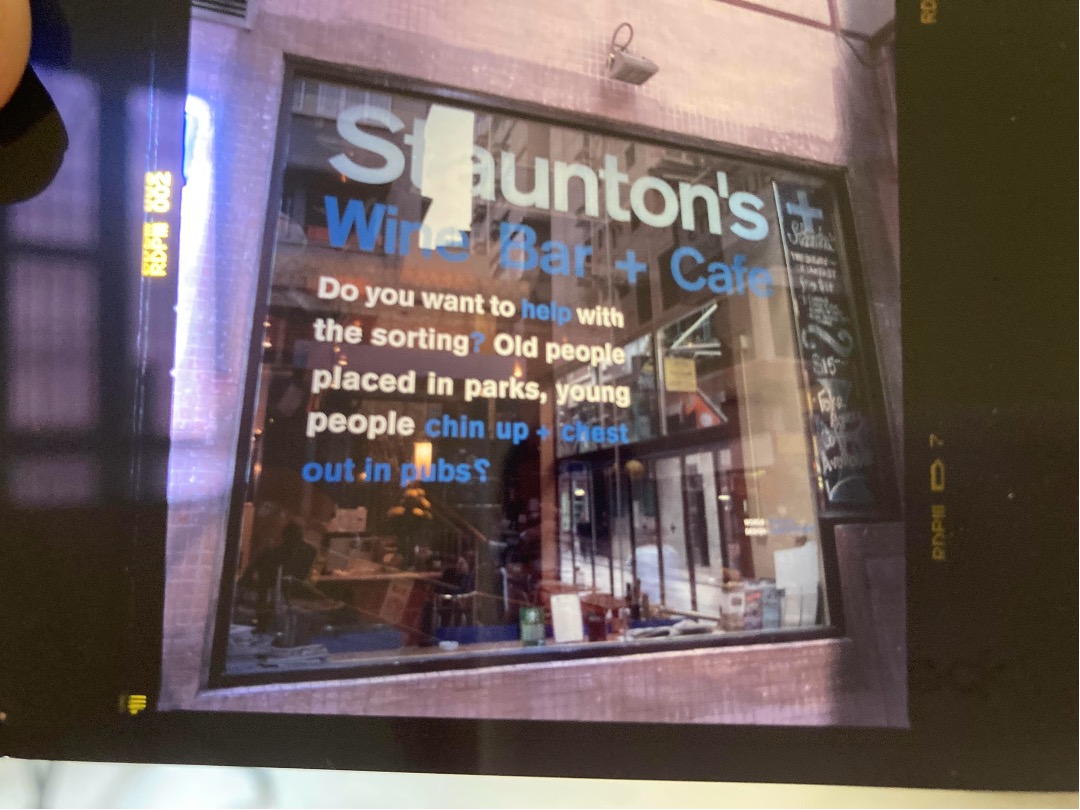SR: Final question about the visual look of your collections Living Shadows, Salt and the first edition of echolocation. Did your job in advertising help in visualising the book? These are also collections you published in Hong Kong. What was the relationship between the city and your writing?
MR: Absolutely. Back in India, in the late 80s and early 90s, the art directors drew thumbnails and went to the studio where they worked with computer designers – so they were out of sight. At Star TV in Hong Kong, I led the print creative team, and got very involved in graphic design, learning a lot by watching them. That’s where the idea of a book as a physical object and artifact became a part of my vision. So, Living Shadows was an all-round work – writing, drawing, and design. I did a few installation projects in Hong Kong too – on café windows, on the walls of an art gallery, in the toilets of the Fringe Club.

This was a poem from my book Salt and custom-designed for the window of Staunton Café by my friend Amber T Matthews. The satire in the poem was really illustrated or re-enacted by its placement. If you lived in Hong Kong, that would be poignant, for you would have seen the numerous parks where old people gather.
echolocation (2003) and Salt (2001) were also sensitive to design and physicality – designed like artifacts. Elby Chung designed echolocation (the first edition) – this was a limited edition, with folded pages, hand-made, bolts instead of binding.
Of course, this went out of print and then Math Paper Press brought out another edition in 2015. In the nineties, Hong Kong art was vibrant. I didn’t understand Cantonese, but I related immediately to art. Many artists did installations – purposeful, and clever – and the style was typically interactive, in a way deliberately low-tech, and perhaps therefore more engaging.
I was intrigued by the principles of Chinese language and tried to learn Mandarin but simply could not reproduce the tones. But yes, I read Chinese poetry and fiction in translation. I came to understand a range of aesthetics and concerns.
SR: Many, many thanks, Mani, for taking time out and patiently answering all my questions.









